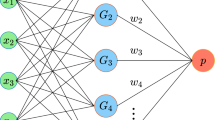Abstract
The random decrement technique (RDT), introduced in the sixties by Cole [NASA CR-2005, 1973], is a very performing method of analysis for vibration signature of a structure under ambient loading. But the real nature of the random decrement signature has been misunderstood until now. Moreover, the various interpretations were made in continuous time setting, while real experimental data are obtained in discrete time. In this paper, the really implemental discrete time algorithms are studied. The asymptotic analysis as the number of triggering points go to infinity is achieved, and a Law of Large Numbers as well as a Central Limit Theorem is proved. Moreover, the limit as the discretization time step goes to zero is computed, giving more tractable formulas to approximate the random decrement. This is a new approach of the famous “Kac-Slepian paradox” [Ann. Math. Stat., 30, 1215–1228 (1959)]. The main point might be that the RDT is a very efficient functional estimator of the correlation function of a stationary ergodic Gaussian process. Very fast, it is to classical estimators what Fast Fourier Transform (FFT) is to ordinary Discrete Fourier Transforms.
Similar content being viewed by others
References
Cole, H. A.: On-line Failure Detection and Damping Measurement of Aerospace Structures by Random Decrement Signatures, NASA CR-2205, 1973
Caughey, T. K., Stumpf, H. J.: Transient response of dynamical system under random excitation. J. of Applied Mechanics, 4, 563–566 (1961)
Ibrahim, S. R., Mikulcik, E. C.: A method for the direct identification of vibration parameters from the free response. The Shock and Vibration Bulletin, 47, 183–198 (1977)
Sarmanov, O. V.: Maximal coefficient of correlation (nonsymmetric case) (in Russian). Doklady Akademii Nauk SSSR, 121(1), 52–55 (1958)
Kolmogorov, A. N., Rozanov, Y. A.: On strong mixing conditions for stationary Gaussian processes. Theory of Probability and Its Applications, 5(2), 204–208 (1960)
Chung, K. L.: A Course in Probability Theory, Second Edition, Academic Press, New York and London, 1974
Wu, L. M.: Large and moderate deviations and exponential convergence for stochastic damping Hamiltonian systems. Stoch. Proc. Appl., 91, 205–238 (2001)
Wu, L. M.: A Φ-entropy contraction inequality for Gaussian vectors and applications to Gaussian Markov processes. In Press, 2005
Kac, M., Slepian, D.: Large excursions of Gaussian processes. Ann. Math. Stat., 30, 1215–1228 (1959)
Author information
Authors and Affiliations
Corresponding author
Additional information
Supported by SRF for ROCS, SEM; National Natural Science Foundation of China (Grant No. 10701058); Science and Technology Program of Beijing Education Commission (Grant No. KM200810028002); Institute of Mathematics and Interdisciplinary Science (Capital Normal University)
Rights and permissions
About this article
Cite this article
Bernard, P., Lei, L.Z. Strong consistency and CLT for the random decrement estimator. Acta. Math. Sin.-English Ser. 26, 1613–1626 (2010). https://doi.org/10.1007/s10114-010-8105-8
Received:
Revised:
Accepted:
Published:
Issue Date:
DOI: https://doi.org/10.1007/s10114-010-8105-8




